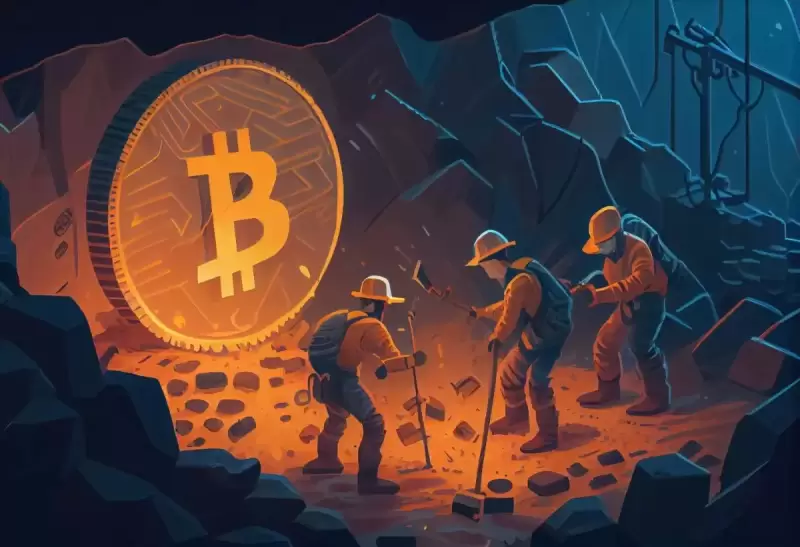 |
|
 |
|
 |
|
 |
|
 |
|
 |
|
 |
|
 |
|
 |
|
 |
|
 |
|
 |
|
 |
|
 |
|
 |
|
Millions of people found themselves without electricity, and worse, without internet. Businesses halted, communication froze, and digital services stopped.

In a world where a large-scale power outage could have devastating consequences, especially in rendering vast portions without internet access, the possibilities of blockchain-powered systems like DePIN (Decentralized Physical Infrastructure Networks) are coming into sharper focus.
As the lights went out in southern Europe this week, rendering millions without electricity—and worse, without internet—businesses were forced to halt, communication froze, and digital services came to a standstill.
With the lights out, one question burned brighter than any other: How can we keep the internet running when the grid goes down?
DePIN: A Backup Plan Built by the Crowd
Enter DePIN (Decentralized Physical Infrastructure Networks), blockchain-powered systems that offer an alternative to centralized infrastructure, using community-owned hardware to provide services like wireless internet, storage, and energy.
Physical infrastructure networks—like telecommunications, energy, water, and transportation—are often natural monopolies.
The result: little incentive for innovation, not to mention horrible customer experiences, bad user interfaces, lackluster service, and slow response…pic.twitter.com/qQuxioPqLX
— a16z (@a16z) March 30, 2025
In traditional networks, a few centralized servers or data hubs manage everything. But if one goes down, like during a power outage, the whole system can fail. DePIN networks solve this by spreading responsibility across thousands of independent nodes.
Think of it like a digital ant colony: resilient, distributed, and hard to break.
Take Helium, a decentralized wireless network that uses user-operated hotspots. When traditional networks go dark, Helium nodes can still transmit low-bandwidth data using small amounts of power, sometimes even solar. In areas with mesh connectivity, nearby devices pick up the slack, rerouting data without relying on a single provider.
It’s inevitable. The DePIN sector is growing, and it’s getting stronger to cover worldwide power outages.
During Texas’s 2021 winter blackout, similar decentralized solutions helped parts of Austin stay connected, even as the main grid failed.
DePIN Momentum Is Growing—And Fast
The blackout in southern Europe highlights why DePIN isn’t just a Web3 trend—it’s a necessity. In 2024 alone, over $850 million was invested in DePIN projects, according to Messari. And interest is expanding beyond connectivity to decentralized energy grids, edge computing, and localized storage.
DePIN demand is accelerating.
Leading High-P DePIN networks are seeing steady growth and tracking towards all-time highs in December.
– @Hivemapper — $HONEY is burned for map data usage. – @GEODNET_ — $GEOD is burned for location correction data usage. – @helium — $HNT is… pic.twitter.com/OcRU2bRMdD
— Nick G | Breed VC (@NickDGarcia) December 13, 2024
Projects like WiFi Map and Nodle are pushing DePIN adoption globally, offering networks that don’t go dark just because a data center or power line fails. These systems are often powered by low-energy crypto projects and designed to tap alternative sources like batteries or solar, making them ideal for power-starved conditions.
When paired with satellite-based solutions like Starlink, DePIN has the potential to keep entire communities online, even when the lights are off.
Disclaimer:info@kdj.com
The information provided is not trading advice. kdj.com does not assume any responsibility for any investments made based on the information provided in this article. Cryptocurrencies are highly volatile and it is highly recommended that you invest with caution after thorough research!
If you believe that the content used on this website infringes your copyright, please contact us immediately (info@kdj.com) and we will delete it promptly.
-

-

-

-

- Base, the Popular Layer-2 Network from Cryptocurrency Exchange Coinbase (COIN), Is Now a “Stage 1” Rollup
- Apr 30, 2025 at 12:30 am
- Base, the popular layer-2 network from cryptocurrency exchange Coinbase (COIN), is now a “stage 1” rollup, said the company, setting up its path towards full decentralization.
-

- Zora Labs ditches its governance token model and creates a huge rift between the token's value and its issuer.
- Apr 30, 2025 at 12:25 am
- The price of Zora has plummeted 55% since it launched six days ago, sending the value of all tokens — both those on the market and yet to be released — to around $150 million.
-

-

-

-



























































